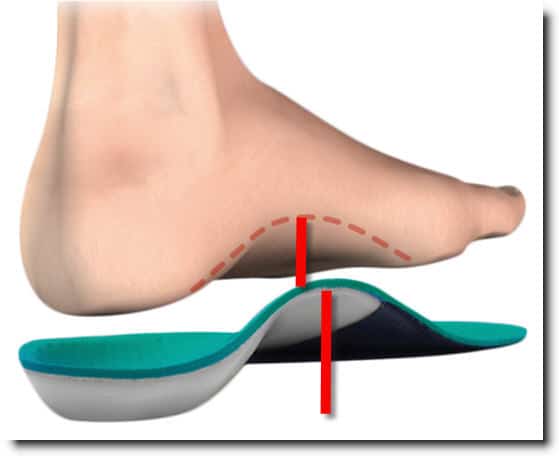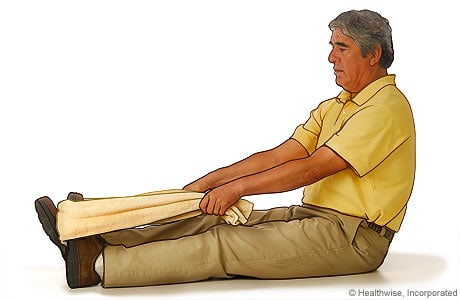By Misty Jurgens Barker
Everyone has those days that their feet hurt so badly. Sometimes you might feel as if you just can’t take one more step. If this is how you feel, it could very well be that you have Plantar Fasciitis. This is a condition where inflammation and pain is in the plantar fascia of the foot. Plantar Fasciitis is the most common cause of pain in the heel of the foot. This is the reason it might be difficult for you to walk. It is discovered in both men and women. It is found more often in active men ages 40-70.
What is Plantar Fasciitis?
Plantar Fasciitis is caused when the plantar fascia gets inflamed and causes heel pain and stiffness. Plantar fascia is the thick band of fibrous connective tissue that runs from the heel bone to the toes, along the sole of the foot. Plantar fascia is shock absorption for when the foot touches the ground; it supports the arch of the foot. This is to help the foot stay flexible. It is responsible for absorbing high stresses and strains that we put our feet through. Too much stress or pressure will cause damage or tears to the tissue.
So what causes Plantar Fasciitis?
According to research, it develops due to foot arch problems, both flat foot and high arches, obesity, running, gaining weight suddenly and having a tight Achilles tendon. Most people think it is a heel spur, but an x-ray will let you know for sure.
Doctors usually can make a definite determination if you have a heel spur or plantar fasciitis by taking x-rays. You should make an appointment with your doctor if you feel pain in your foot so they can help relieve the pain and/or discomfort before it gets worse. You more than likely have plantar fasciitis if you experience pain in your foot, pain is often, family history of it, when you walk the pain increases, long-distance runner, gained weight suddenly, tight Achilles tendon or have poor arched soles in your shoes. You should be able to tell your doctor when you notice the pain, where pain is located, how the pain feels, and any medications you are on, any past conditions that could be affecting the foot.
Initial Medical Treatments:
Each person gets relief differently depending on how bad the pain and actual cause of pain.
1.) Most of the time your doctor will suggest that you take tylenol or advil to reduce the pain and inflammation.
2.) You will need to do heel and foot stretches.
3.) You might get night splints to wear while you are sleeping which helps stretch the foot.
4.) Stay off your feet for a week as much as possible.
5.) Ice your heel in 10 minute increments to help with the pain and inflammation.
6.) Make sure you get fitted for proper shoes that have good support and cushion.
 Next Step Medical Treatments:
Next Step Medical Treatments:
When the pain continues past a couple of days it’s time to step up the treatment protocols
 1.) See the Orthopedic to get insoles (orthotics) that help support your feet.
1.) See the Orthopedic to get insoles (orthotics) that help support your feet.
2.) Ice the painful area at least twice a day for approximately 10-15 minutes; do this for a week.
3.) Use an elastic band and stretch your feet to your shins and hold this for 20 seconds. Repeat 10 times.
4.) Standing against the wall and stretching your foot with toes in the air is another good stretch.
 5.) Take two canned goods and roll your feet on top of them. Alternative: use frozen cans
5.) Take two canned goods and roll your feet on top of them. Alternative: use frozen cans
6.) Perform calf stretches. Lean forward against a wall with one knee straight and foot’s heel on the ground. Repeat this exercise 20 times for each foot. A strong pull in the calf should be felt during the stretch.
ATTENTION: BEST TIP!!!
7.) Perform a plantar fascia stretch.
A.) In the seated position, cross your affected foot over the knee of your other leg.
B.) Grasp the toes of your painful foot and slowly pull them toward you in a controlled fashion. If it is difficult to reach your foot, wrap a towel around your big toe to help pull your toes toward you.
C.) Place your other hand along the plantar fascia. It will feel like a tight band along the bottom of your foot when stretched. Hold the stretch for 10 seconds. Repeat it 20 times for each foot. This exercise is best done in the morning before standing or walking.
Advise:
Don’t give up after a few treatments. These exercises are trying to prevent the next steps. If after several weeks of treatment and stretching, consultation with a physical therapist and an Orthopedist can’t help you get rid of the pain, you might need steroid shots in the heel or as last resort…SURGERY!
Challenge:
Try a few of these steps. You or a family member may need them someday. Please respond with extra steps that you have tried or feel would help others!!!!
Edited by Ross Ashcraft
References:
http://www.ncbi.nlm.nih.gov/pubmedhealth/PMH0004438/figure/A007021.B19568/?report=objectonly
http://www.ncbi.nlm.nih.gov/pubmedhealth/PMH0004438/
http://orthoinfo.aaos.org/topic.cfm?topic=a00149









